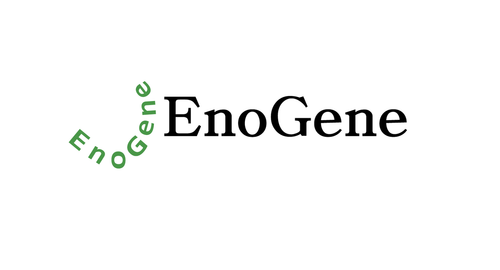Product Description
TGF Beta Receptor I Antibody (Center) [APR07022G] | Leading Biology
Product Category: Polyclonal Antibodies
Host: Rabbit
Species Reactivity: H, M
Specificity: This TGF Beta Receptor I antibody is generated from rabbits immunized with a KLH conjugated synthetic peptide between 134-163 amino acids from the Central region of human TGF Beta Receptor I.
Cellular Localisation: Cell membrane; Single-pass type I membrane protein. Cell junction, tight junction. Cell surface. Membrane raft
Molecular Weight: 55960
Clone: Polyclonal
Gene Name: TGFBR1
Gene ID: 7046
Function: Transmembrane serine/threonine kinase forming with the TGF- beta type II serine/threonine kinase receptor, TGFBR2, the non- promiscuous receptor for the TGF-beta cytokines TGFB1, TGFB2 and TGFB3. Transduces the TGFB1, TGFB2 and TGFB3 signal from the cell surface to the cytoplasm and is thus regulating a plethora of physiological and pathological processes including cell cycle arrest in epithelial and hematopoietic cells, control of mesenchymal cell proliferation and differentiation, wound healing, extracellular matrix production, immunosuppression and carcinogenesis. The formation of the receptor complex composed of 2 TGFBR1 and 2 TGFBR2 molecules symmetrically bound to the cytokine dimer results in the phosphorylation and the activation of TGFBR1 by the constitutively active TGFBR2. Activated TGFBR1 phosphorylates SMAD2 which dissociates from the receptor and interacts with SMAD4. The SMAD2-SMAD4 complex is subsequently translocated to the nucleus where it modulates the transcription of the TGF-beta-regulated genes. This constitutes the canonical SMAD-dependent TGF-beta signaling cascade. Also involved in non-canonical, SMAD-independent TGF-beta signaling pathways. For instance, TGFBR1 induces TRAF6 autoubiquitination which in turn results in MAP3K7 ubiquitination and activation to trigger apoptosis. Also regulates epithelial to mesenchymal transition through a SMAD-independent signaling pathway through PARD6A phosphorylation and activation.
Summary: Tissue Location: Found in all tissues examined, most abundant in placenta and least abundant in brain and heart. Expressed in a variety of cancer cell lines (PubMed:25893292) .
Form: Purified polyclonal antibody supplied in PBS with 0.09% (W/V) sodium azide. This antibody is prepared by Saturated Ammonium Sulfate (SAS) precipitation followed by dialysis against PBS.
Storage: Maintain refrigerated at 2-8°C for up to 2 weeks. For long term storage store at -20°C in small aliquots to prevent freeze-thaw cycles.
Application: WB, IHC-P
Dilution: WB--1:1000 IHC-P--1:100~500
Synonyms: TGF-beta receptor type-1, TGFR-1, Activin A receptor type II-like protein kinase of 53kD, Activin receptor-like kinase 5, ALK-5, ALK5, Serine/threonine-protein kinase receptor R4, SKR4, TGF-beta type I receptor, Transforming growth factor-beta receptor type I, TGF-beta receptor type I, TbetaR-I, TGFBR1, ALK5, SKR4
 Euro
Euro
 USD
USD
 British Pound
British Pound
 NULL
NULL

![TGF Beta Receptor I Antibody (Center) [APR07022G] TGF Beta Receptor I Antibody (Center) [APR07022G]](https://cdn11.bigcommerce.com/s-452hpg8iuh/images/stencil/1280x1280/products/868349/1160416/logo__92149.1659788186__38804.1659864340.png?c=2)
![TGF Beta Receptor I Antibody (Center) [APR07022G] TGF Beta Receptor I Antibody (Center) [APR07022G]](https://cdn11.bigcommerce.com/s-452hpg8iuh/images/stencil/100x100/products/868349/1160416/logo__92149.1659788186__38804.1659864340.png?c=2)
![TGF Beta Receptor I Antibody (Center) [APR07022G] TGF Beta Receptor I Antibody (Center) [APR07022G]](https://cdn11.bigcommerce.com/s-452hpg8iuh/images/stencil/500x659/products/868349/1160416/logo__92149.1659788186__38804.1659864340.png?c=2)




